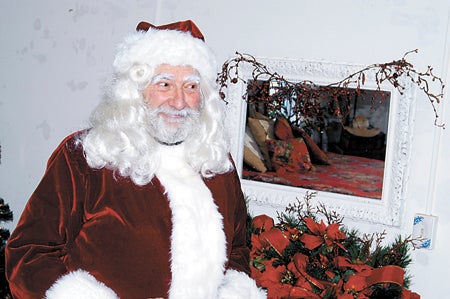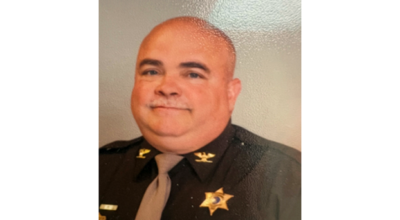19 trees brighten Bonine House
Published 3:57 pm Monday, December 17, 2012
VANDALIA — The Underground Railroad Society of Cass County decorated 19 Christmas trees in the Bonine House for its holiday debut Friday, Saturday and Sunday.
Each room was decorated by a different individual, providing a variety of holiday interpretations, plus Santa, Gary Weaver of Dowagiac, was upstairs.
Dorothy Mickey, whose husband is Penn Township supervisor, created a room for children with more animated figures than a department store window.
“Aren’t we all kids at heart?” she said. “It was sort of blah, so I brought in my decorations. (Santa on a ladder) I got from Target, which made those exclusively. It took me three solid weekends, Friday, Saturday and Sunday. During the day, I volunteer at Helping Hands four days a week. It was fun, but now I think, ‘I’ve got to pack all this up.’ ”
Patty Walker Dresser made a bed with 27 boxes with a headboard of doors. The mantel came from her sunroom at home. She made “quickie curtains” for the bedroom windows.
“It just evolved,” Dresser said. “The house wouldn’t have had a fan, so I camouflaged it with greenery” and hung cones for a “chandelier effect, but I didn’t want crystal. I wanted it earthy.”
Poinsettias spill out of a wicker planter.
James E. Bonine came to Cass County in 1843, married Sarah Ann Bogue in 1844 and began building their Greek Revival farmhouse shortly therafter.
The original home was a simple rectangle. The back outside wall was just behind the staircase, evidenced by its width. There is more evidence at the top of the staircase in the wide floorboard at the hallway.
Essentially, it was a four-room house — living room, parlor and two bedrooms upstairs. The kitchen might have been a separate structure. A crawl space exists under the original house built during the Underground Railroad (UGRR) period, but no tunnels have been found so far.
Bonine was one of the largest landowners in the county and a very successful farmer and businessman. He had more than 1,600 acres by 1853.
Bonine built the Carriage House across M-60 in the early 1850s. There is substantial evidence that fugitive slaves hid there, making him an UGRR stationmaster.
He earned a great deal of money during the Civil War and spent a large sum remodeling the home, since the Bonines had four children, two sons and two daughters.
Second Empire is a style that originated in France during Napoleon and is widely seen in Paris. It was popular from 1860 to 1880 and adopted by wealthy Americans.
Around 1870, the tower with its distinctive mansard roof and double doors were added to the front of the house. The tower has been restored to its original color.
Decorative brackets were added under the eaves. A covered porch surrounded the front and east sides of the home.
The house was enlarged to the north, adding the dining room, kitchen and another parlor on the first floor and four bedrooms upstairs.
The living room windows and parlor were elongated, a bay installed in the living room and double-arched windows upstairs — all features of Second Empire.
A basement is under the addition. About this time James E. created “Bonine Elk Park” adjacent to the house and stocked it with elk, deer and buffalo. It became a Michigan Department of Transportation state park.
The state historic marker originally placed there now stands in Milo Barnes Park in Vandalia.
This renovation and the Gothic Revival Carriage House make the Bonine property one of the most unique examples of Victorian domestic architecture in southwest Michigan and northern Indiana.
URSCC and Friends of the Bonine House plan to restore it to the Second Empire remodel, since the interior is mostly original. They plan to smooth and paint the trim, plaster the walls and ceilings and buff the floors. They will install a functioning kitchen so the downstairs can be used for events and communities activities. The upstairs will tell the story of the URGG in Cass County.
Grounds will be landscaped with gardens, walkways, benches and a fountain for weddings.
The organization aims to have the Bonine House completed in two years, then the Carriage House will be renovated to serve as a large exhibit museum space and center for community events.
Visit www.urscc.org to learn more or to contribute; URSCC, P.O. Box 124, Vandalia, MI 49095; (269) 445-7358. The URSCC is a tax-deductible, 501c3 nonprofit organization.







